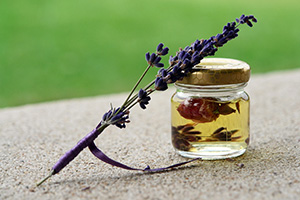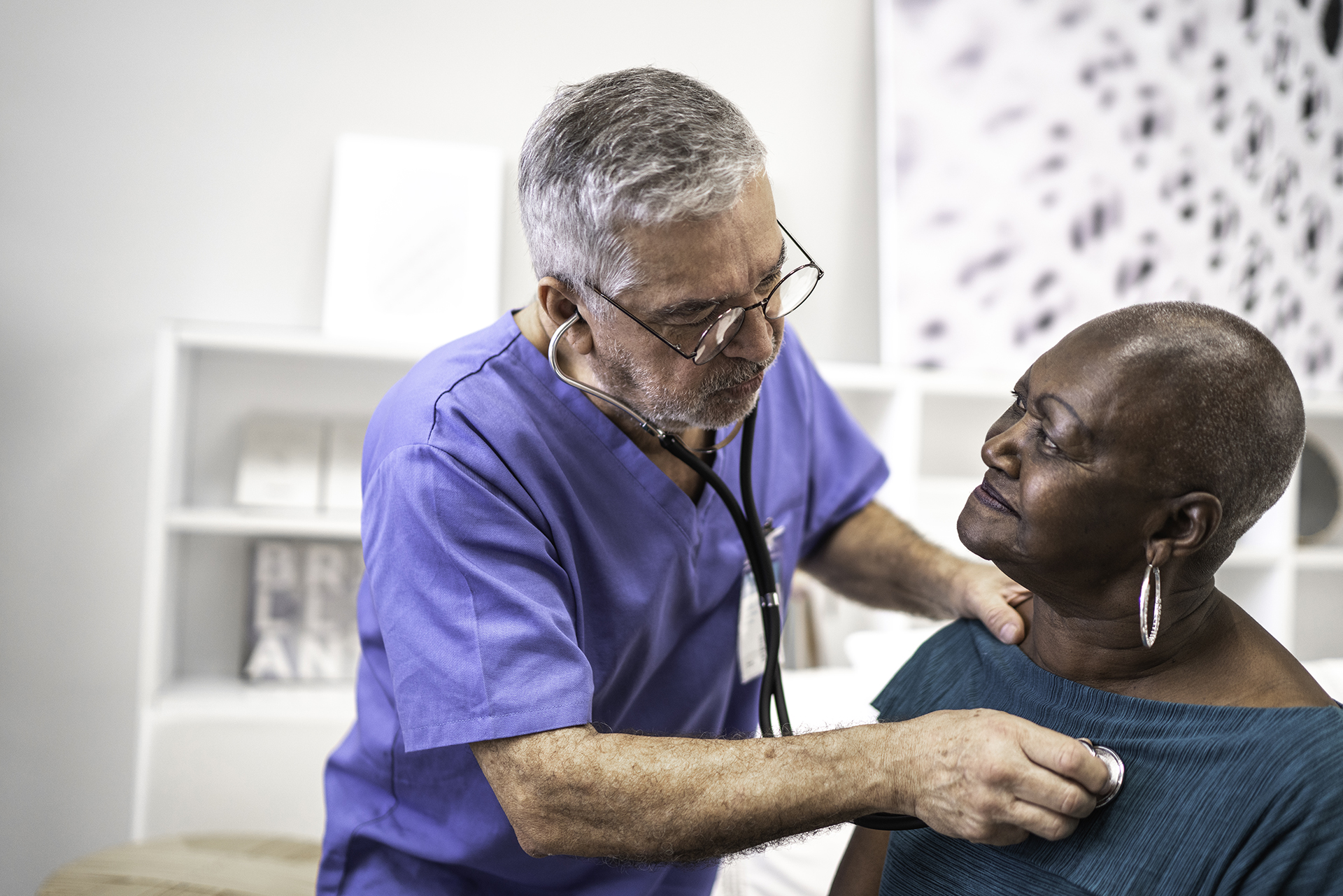Latest News
Prevention & Control
The aroma of good health
Aug 26, 2016

Aroma, the word alone brings powerful memories—some good, some not so good. Most people, however, have no idea how much aroma and our sense of smell can influence well-being. Enter aromatherapy.
Aromatherapy is the use of essential oils distilled from plants to care for the mind, body and spirit. It’s much more than good smells, like scented candles or perfume. In fact, there’s evidence that special receptor cells inside the nose respond to the molecules in essential oils by sending chemical messages to the limbic system in the brain (Thomas, 2002). The limbic system is partially responsible for moods and emotions, such as joy, anger, peace and fear. Because it stores emotional memories and is extremely sensitive to odors, the limbic system is a trigger to a host of chemical reactions in the brain, including the pituitary gland and hypothalamus. Fully functional even at birth, the limbic system is ready to detect scents and begin a cascade of reactions in the body. The effects can be measured by heart rate, breathing, blood pressure, memory, hormone balance and stress level (Trivieri, 2001).
Aromatherapy has been around for centuries, with plants and their essential oils used by many different cultures to promote and improve health, as well as for spiritual rituals. In Pressman and Shelly’s book Integrative Medicine, the authors describe how ancient Hindus anointed themselves with aromatic oils during religious ceremonies to ward off spiritual impurities. Fragrances were considered necessary to reach a higher state of spirituality. Spikenard oil was reportedly used by Mary Magdalene on the feet of Jesus. Even Hippocrates, the father of Western medicine, is attributed to recommending a daily aromatic bath and scented massage to maintain good health. Centuries later, serious medical conditions were treated with a variety of essential oils by the French physician Jena Valnet (Trivieri, 2001).
The word aromatherapy is attributed to another Frenchman, chemist Rene-Maurice Gattefossé. Working in his family’s perfume factory, one day he suffered a third-degree burn to his right hand and arm. In pain, he plunged it into a vat he thought was water, but was actually lavender oil. Lucky for him, lavender oil was known to soothe burns and reduce inflammation. His burns healed quickly, capturing his curiosity and causing him to begin experimenting with a number of other essential oils and recording their healing properties. It wasn’t until the 1980s that aromatherapy became popular in the United States. Today, health care professionals such as physical therapists, physicians, nurses, massage therapists and nutritionists are turning to essential oils for their health benefits (Price & Price, 2007).
In cancer care, aromatherapy is used mainly as a form of supportive care, with the aim of improving symptoms and therefore quality of life. Anxiety, fatigue, nausea and vomiting, pain, sleeplessness and stress are symptoms frequently improved by the use of aromatherapy. In addition to symptom relief and improved well-being, essential oils have been found to be antibacterial, antiviral, stimulating to the immune system and may have anti-oxidant properties.
A variety of plant parts contain essential oils, which are stored in tiny pockets between cell walls. Below are a few examples of plant parts where essential oils come from: leaves (eucalyptus, peppermint); flowers (lavender, rose); wood (camphor, sandalwood); bark (cinnamon); and gum (frankincense). Essential oils may be used alone or blended, depending upon the desired effect. Professional aromatherapists use up to 300 different types of essential oils.
Some of the more popular essential oils are reputed to have the following benefits (Ford, 2005):
Chamomile: Reduces anxiety, headaches, stress, immune stimulant
Clove: Anti-bacterial, anti-parasitic, antioxidant protection
Eucalyptus: Invigorating, purifies the body, improves sinusitis and allergies
Ginger: Reduces inflammation, relieves nausea, improves digestion
Lavender: Helps with relaxation and mood, heals burns and cuts
Myrrh: Natural antiseptic, prevents/reduces infections
Orange: Antibacterial, antidepressant, anti-inflammatory, sedative properties
Rose: Reduces skin inflammation
Tea Tree Oil: Natural anti-bacterial, anti-fungal, reduces bad odors
Nationwide, hospitals are using essential oils to boost productivity, ward off infections and improve morale. Over 50 hospitals are using aromatherapy for these benefits, including the Cleveland Clinic and Memorial Sloan-Kettering, two well-known medical centers. The Wellness Committee at Vanderbilt Medical Center approved a study of essential oil aromatherapy in their emergency department. Work-related stress went from 41 percent to 3 percent after 30 days. Optimal energy increased, and, at the end of the trial, 84 percent of the staff strongly agreed and an additional 10 percent agreed that the use of the essential oils contributed to a more positive work environment. Nurse Manager Teresa James, MS, RN, BFA, OCN, reports that a similar study is being planned for patients and staff in Massey’s Dalton Oncology Clinic.
The results among researchers examining the effects of aromatherapy have been mixed, however. A review of the scientific literature published in the last ten years resulted in comments such as “existing evidence encouraging but not compelling;” “evidence base for effectiveness of aromatherapy remains poor;” “promising results, suggesting additional research is needed;” and “lack of rigorous research evidence precludes drawing a definitive conclusion.” Often in these studies, the sample sizes were too small to be considered significant and any benefits were found to be temporary. Comments in several of the studies concerned the challenge of performing research with essential oils—it’s almost impossible to have a placebo with the same odor as the intervention. Overall, conclusions about the use of aromatherapy in the scientific literature report no ill effects; that aromatherapy has promising potential; more rigorous research is needed; and, because of growing interest in the field, professionals want more accurate and evidence-based information about aromatherapy (van der Watt & Janca, 2008; Wilkinson, S., Barnes, K., & Storey, 2008).
There were some studies identified that were well designed and showed statistical significance when aromatherapy was used as an intervention. Among the findings were reduced stress in nurses (Chen, Fang, & Fang, 2015); reduced perception of burnout and fatigue (Varney & Buckle, 2014); an improvement in the reduction and duration of menstrual pain (Rahnmna, Montazeri, Huseini, Kianbaklit, & Naseri, 2012); reduced anxiety among dental patients (Kritsidima, Newton, & Asimakopoulou, 2010); and decreased cortisol (a hormone in the blood indicating stress) (Shiina et al., 2009).
Interested in trying aromatherapy for yourself? Safety first! If you are being treated for cancer, always check with your oncologist first as some of your medications, treatments or even pre-existing conditions could make aromatherapy unsafe. Here are some important safety facts to consider:
- Use essential oils with caution. Keep them away from children and pets.
- Oils are flammable. Keep them away from stoves and open flames.
- Oils should not be ingested.
- Oils should not be used during pregnancy (unclear risk to fetus).
- Keep essential oils away from the eyes and mucous membranes.
- Essential oils are extremely concentrated. They should be used with carrier oils, such as almond oil, coconut oil, jojoba oil or olive oil.
- Essential oils can be irritating to the skin or mucous membranes. Always test for sensitivity before using. If in doubt or a rash appears, discontinue use.
- Certain essential oils can cause photosensitivity. Be aware of which oils are associated with photosensitivity.
- Avoid phototoxic oils (bergamot, grapefruit, lemon, lime and verbena) if you are about to be exposed to radiation therapy.
- If you are being treated for estrogen-dependent cancers, do not use fennel, aniseed, clary sage or sage because of their estrogenic effects.
- Store essential oils in dark containers and keep them out of the light.
Essential oils are not regulated by the Food and Drug Administration, and there is no organization that oversees the quality of oils that are sold. Because the purity of the oils is directly related to their effectiveness, be cautious when shopping for essential oils. Be wary of those described as “infused oils,” “nature identical,” “aromachemicals,” “pure essential oil,” or “fragrance oil.” These should not be used for aromatherapy. Read labels carefully and buy from reputable dealers. Because essential oils are concentrated, some types are very expensive; however, the majority are fairly affordable.
If you are interested in more information about aromatherapy and essential oils, check out the following websites:
www.cancer.gov/about-cancer/treatment/cam/patient/aromatherapy-pdq
National Association for Holistic Aromatherapy
Alliance of International Aromatherapists
References
Chen, M., Fang, S., & Fang, L. (2015). The effects of aromatherapy in relieving symptoms related to job stress among nurses. International Journal of Nursing Practice, 21(1), 87-93. doi:10.1111/ijn.12229
Ford, J. (2005). In the clinic: Using aromatherapy in practice. Occupation Therapy Practice, 10(1), 25.
Kritsidima, M., Newton, T., & Asimakopoulou, K. (2010). The effects of lavender scent on dental patient anxiety levels: A cluster randomized-controlled trial. Community Dentistry & Oral Epidemiology, 38(1), 83-87. doi:10.1111/j.1600-0528.2009.00511.x
National Cancer Institute (2014). Aromatherapy and Essential Oils (PDQ®)-Patient Version (2014). Retrieved from www.cancer.gov/about-cancer/treatment/cam/patient/aromatherapy-pdq
Pressman, A., & Shelley, D. (2000). Integrative Medicine. New York: St. Martin’s Press.
Price, S., & Price, L. (2007). Aromatherapy for Health Professionals, 3rd Ed. Philadelphia: Churchill Livingston Elsevier.
Rahnmna, P., Montazeri, A., Huseini, H., Kianbakli, S., & Naseri, M. (2012). Effect of Gingiber officinale R. rhizomes (ginger) on pain relief in primary dysmenorrhea: A placebo randomized trial. BMC Complementary and Alternative Medicine. 2012; 12:92
Shiina, Y., Funabashi, N., Lee, K., Toyoda, T., Sekine, T., Honjo, S., Hasegawa, R., Kawata, T., Wakatsuki, Y., Hayashi, S., Murakami, S., Koike, K., Daimon, M. and Komuro, I. (2008). Relaxation effects of lavender aromatherapy improve coronary flow velocity reserve in healthy men evaluated by transthoracic doppler echocardiography. International Journal of Cardiology. 129(2): 193-7. doi:10.1016/j.ijcard.2007.06.064
Thomas, D. (2002). Aromatherapy: mythical, magical, or medicinal? Holistic Nursing Practice, 16(5), 8-16. doi: 10.1097/00004650-200210000-00005
Trivieri, L. (2001). The American Holistic Medical Association Guide to Holistic Health. New York: John Wiley & Sons, Inc.
Varney, E., & Buckle, J. (2014). Effect of inhaled essential oils on mental exhaustion and moderate burnout: A small pilot study. Journal of Alternative & Complementary Medicine, 19(1), 69-71. doi: 10.1089/acm.2012.0089
van der Watt, G., & Janca, A. (2008). Aromatherapy in nursing and mental health care. Contemporary Nurse, 30 (1), 69-75.
Wilkinson, S., Barnes, K., & Storey, L. (2008). Massage for symptom relief in patients with cancer: systematic review. Journal of Advanced Nursing, 63(5), 430-439. doi:10.1111/j.1365-2648.2008.04712.x
Written by: Massey Communications Office
Related News
Prevention & Control
How common is prostate cancer: Massey oncologist breaks down symptoms and at what age you should start getting screenedMay 21, 2025
Research, Center News & Funding, Prevention & Control
Bernard Fuemmeler, Ph.D., honored with Senior Investigator Award from Society of Behavioral MedicineMar 31, 2025
Research, Prevention & Control, Technology
Massey offers new non-surgical robotic focused ultrasound procedure for prostate cancerMar 12, 2025

Get access to new, innovative care
Treatments in clinical trials may be more effective or have fewer side effects than the treatments that are currently available. With more than 200 studies for multiple types of cancers and cancer prevention, Massey supports a wide array of clinical trials.

Find a provider
Massey supports hundreds of top cancer specialists serving the needs of our patients. Massey’s medical team provides a wealth of expertise in cancer diagnosis, treatment, prevention and symptom management.
